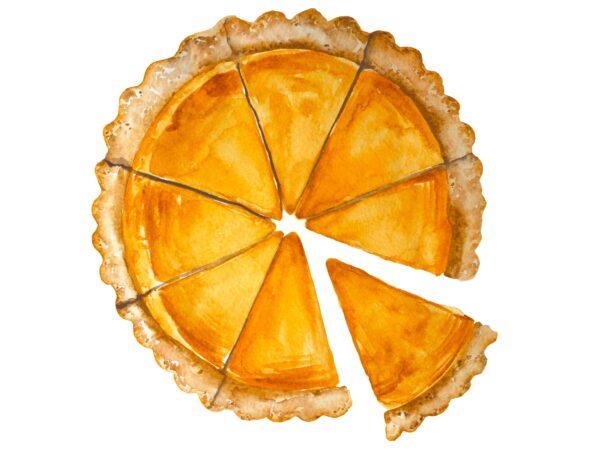Archimedes was a scientist we studied in fifth grade for no other reason than to introduce my students to the wonderful world of pi. What does he have to do with pi? You haven’t heard the story? Well, sit back and let me tell you. He is one of my all-time favorite historical characters!
Archimedes was a Greek mathematician, scientist, engineer, and inventor from the town of Syracuse on the island of Sicily. You may know Sicily as a part of the country Italy, but that was not always so. Long ago, this island belonged to Greece, and it was at that time that Archimedes lived there.
Archimedes was famous for his many inventions and discoveries. Everyone on the island knew of his brilliance. He invented many of the tools and contraptions the Greeks were using to fight a war with the Romans (the Italians of long ago). Archimedes used the formula for area in all of his contraptions, but when it came to circular objects, he was stumped.
One day, Archimedes discovered that if you divided the circumference of a circle by its diameter you would come up with the same approximate number every time. He was sure the first three digits of the number were 3.14, but after that his calculations became fuzzy. Archimedes was a mathematician, a scientist! Fuzzy was not good enough. He must find the exact number that is derived from dividing the circumference of a circle by its diameter. If he could do that, he knew he would be able to find the exact area of a circle.

Suddenly, all of his work stopped. He quit inventing things. He stopped discovering things. He lost his curiosity for all things except for his new obsession of discovering the true value of pi. He spent hours, then days, then months drawing circles in the sand. He drew other shapes like octagons and even decagons inside the circles to help him find the answer.
One day, a group of villagers came to Archimedes and started yelling, “Run, Archimedes, run! The Romans are coming! Take cover immediately!”
Archimedes was nonplussed. “I will be there in a few minutes. I must finish this circle. I am so close to an answer. I may just have discovered pi.”
His friends were frantic. “Archimedes, you must forget about pi! The Romans are on the other side of that hill. They will be here any moment! You must come with us. You are in grave danger!”
“Soon,” said Archimedes. “Go on without me. I will meet you soon. I must finish this one circle and this last calculation.”
The villagers looked at him in horror, but they knew there was no use. They turned and ran. Within minutes, the Romans came over the hill and killed Archimedes. It was said that his last dying breath was, “Don’t disturb those circles…”
Are you intrigued by this story? My fifth graders were! Is the story true? Perhaps parts of it are true, but I am not really sure. Archimedes was born in 287 B.C. and died—well, I’m not really sure when he died, but it was probably some 200 years B.C. Somewhere in a book, I read a very short version of this story decades ago. I wish I could give credit, but I’m really not sure where I read it. I do remember that the book said no one is sure if the story is true or not. Regardless, I took that story, added a bit of theater and embellishment, and suddenly my students wanted to know everything they could about Archimedes and about the number pi.
Another way I drew my students into my pi world was by having the digits of pi as a number line wrapping around the walls of my classroom. By fifth grade, my students didn’t really need their ABCs or a number line anymore, so they had 3.1415926535897… to stare at day after day after day. Usually, the first week of school, at least one student would ask me, “What are those numbers for?”
I would tell them, “Those are the digits of pi. You really won’t learn much about them until March, when we have a special day celebrating those digits called Pi Day. There will be a memorization contest, so if you want to start memorizing them now, feel free.” And some did. When students finished their work or a test, I would often see them staring at the numbers, and I could tell they were reciting them in their head. It always made me smile.

The thing is, memorizing pi is really the smallest part of our Pi Day celebration. Of course, we have a pi digit memorization contest. For some students, this is their spelling bee. For some students, this is where they shine. Is there a trophy? Not really. The winner gets something even better. The winner of the pi memorization contest gets a pie in his or her face, and I (their teacher) get the honor of putting it there! To a fifth grader, there is no better prize!
So, what is Pi Day? Pi Day takes place on March 14, because it is the fourteenth day of the third month of the year. March is also synonymous with preparing for state testing. Little do my students know I use Pi Day as a preparation tool for this test. We haven’t reached the geometry unit in our math textbook by this time, but there is plenty of geometry on the test.
Fifth graders are not required to know how to find the area of a circle, but they are required to find the area of a square, a rectangle, and a triangle. I teach them how to find the area of a circle. I teach them how to read a formula. Then I backtrack and teach them how to use those skills to find the area of other shapes. After learning about pi and circles, this is “a piece of cake.”
There is also a song I use to teach them about pi. I usually start playing the song early in the year, and I play it while students are getting ready for math or at the end of the day or when the kids beg me to play it. The song is on YouTube; it is called “Mathematical Pi,” and it’s written to the tune of “American Pie.” Not only do the kids love it, there are lots of vocabulary words in the song ripe for student discovery.
By the beginning of March, students are primed and ready to prepare for the magical day. Students are given the choice to work on their own, work with a partner, or work with a group. Their job is to create a presentation for Pi Day. What kind of presentation, you ask? Whatever kind they want! The possibilities are endless, and their only restraint is that the topic must in some way connect to pi.
Next, students create invitations to give to parents, grandparents, and family members. Students who finish their projects early begin decorating the classroom for the big day with geometric shapes, formulas, pi symbols, pi facts, and more. One year, we even had a 7-foot Pi Day tree.

When the big day arrives, each student brings a pie to school. I bring a few extra, just in case, but they are usually not needed. Students put the finishing touches on the classroom. We rearrange the room so we have room for our guests to sit down, and we use the desks as serving tables for the pie. We set up a coffee and juice station, and students rehearse their presentations.
The projects are out of this world. Students have written songs; some are playing their band instruments as background music; some have created plays about Archimedes’ life; one student made a quilt (the squares colored to represent the digits of pi); some students have created videos; others have created PowerPoint presentations; one student has done a research project on Albert Einstein because his birthday is on Pi Day.
At 1:45, we open our door and family pours in. Two students pass out a program that a group of students created. Others usher the adults to their seats. The American Pie song and video called “Mathematical Pi” is playing on the whiteboard, and all of the kids are singing. There is one table in the front of the room with one pie, and a knife.
At 1:55, I stand in the front of the room to welcome our guests. This is the only time I will speak. I explain to the parents that we are celebrating the day because pi equals approximately 3.14 and today is the 14th day of the third month. I then explain that the next three digits are 159, so we will have the formal pie cutting ceremony at 1:59. A student stands by with an iPad and a digital countdown. We all count down as I raise the knife and cut the pie! After this, the students serve their family pie, and the presentations begin.
My wish is that someone who reads this will pick up this tradition with his or her children. Tell them the story of Archimedes. Teach them the magic of numbers. Most of all, share pie with them on March 14!





